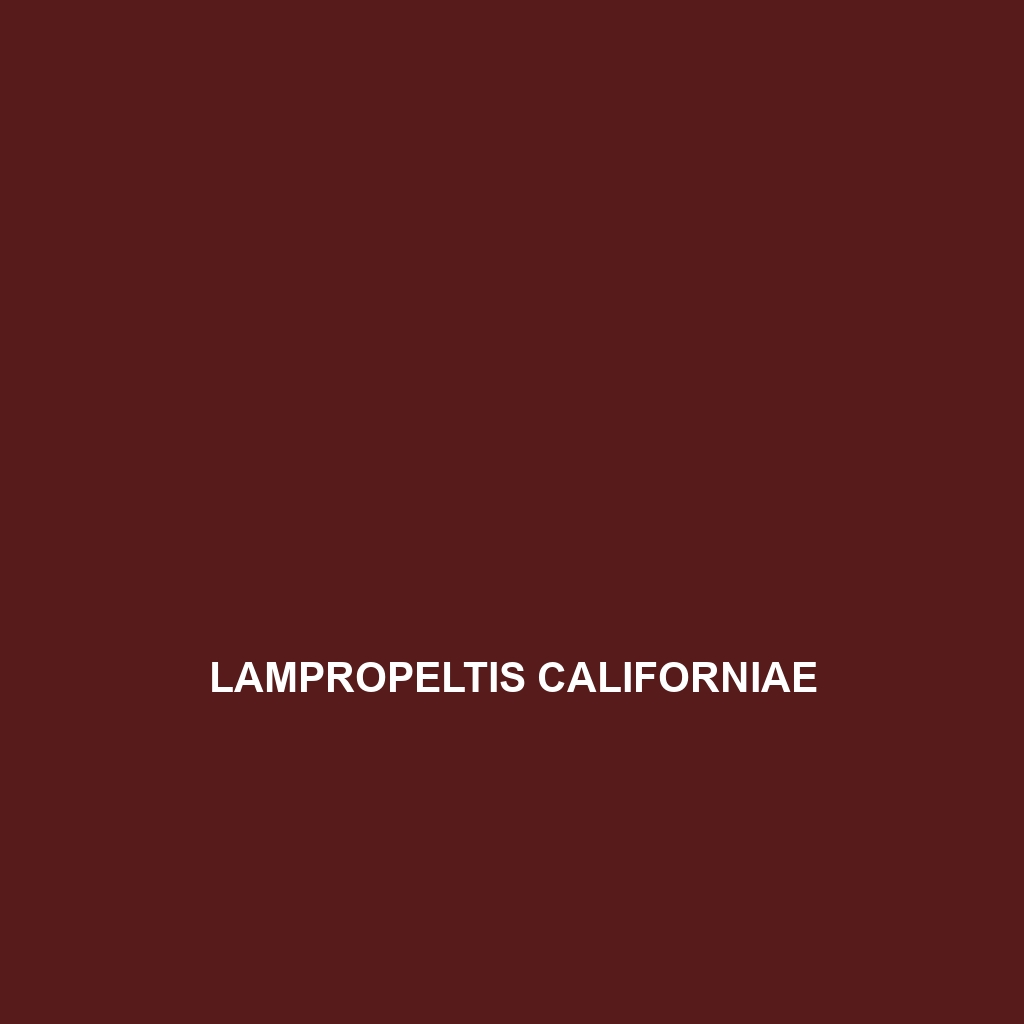Discover the Eastern Hognose Snake (<i>Lampropeltis calligaster</i>), a fascinating, diurnal reptile known for its distinctive hog-nosed snout and unique defensive behaviors. Thriving in diverse habitats across the Central and Eastern U.S., this carnivorous predator plays a vital role in controlling local ecosystems.
Tag: reptile care
Lampropeltis californiae
Discover the striking <b>California kingsnake</b> (<i>Lampropeltis californiae</i>), a medium-sized, carnivorous snake known for its distinctive black and white or yellow bands, found in diverse habitats across the western United States and parts of Mexico. Adaptable and primarily nocturnal, it plays a crucial role in the ecosystem by controlling populations of small mammals and other species.
Kinyongia magomberae
<b>Kinyongia magomberae</b>, a vibrant chameleon native to the rainforests of East Africa, showcases striking color-changing abilities, reaching lengths of 20-30 cm. This insectivorous species plays a vital role in its ecosystem by controlling insect populations while thriving in humid, subtropical climates.
Hydrosaurus celebensis
<p>Discover the captivating <b>Hydrosaurus celebensis</b>, or Celebes water dragon, a stunning lizard native to the rainforests of Sulawesi, Indonesia. With its vibrant coloration, impressive swimming abilities, and essential role in ecosystem health, this herbivorous species thrives in warm, humid environments near freshwater sources.</p>
Hemidactylus depressus
<p>The <b>Hemidactylus depressus</b>, commonly known as the depressed house gecko, is a small, nocturnal insectivore found in tropical rainforests and coastal regions. With a slender, flattened body and adhesive toe pads, this gecko exhibits fascinating behaviors such as territorial displays and courtship rituals, while playing a vital role in controlling insect populations and maintaining ecosystem balance.</p>
Hemidactylus angulatus
<p><b>Hemidactylus angulatus</b>, commonly known as the Angular Gecko, is a medium-sized, nocturnal reptile native to tropical rainforests and sandy savannas in Southeast Asia and Africa. With its unique ability to regenerate its tail and excellent camouflage, this insectivorous species plays a crucial role in regulating insect populations and maintaining ecosystem balance.</p>
Geoclemys hamiltonii
<p>The <b>Geoclemys hamiltonii</b>, or Indian Star Tortoise, is a captivating herbivorous species known for its distinctive dome-shaped shell adorned with star-like patterns. Found primarily in tropical regions of India and Sri Lanka, this vulnerable tortoise plays a crucial role in its ecosystem and can live over 100 years in the wild.</p>
Egernia formosa
This beautiful skink, <b>Egernia formosa</b>, is a striking species native to Australian rainforests and temperate forests, characterized by its vibrant black, brown, and orange coloration. Known for its unique communal living habits and omnivorous diet, this adaptable lizard plays a crucial role in maintaining ecosystem balance.
Diploderma menghaiense
intriguing Diploderma menghaiense, a medium-sized lizard native to the forests of Southwest China, known for its striking green, brown, and gray coloration that offers excellent camouflage. This diurnal insectivore plays a vital role in controlling insect populations and exhibits fascinating behaviors, including territorial displays and the ability to slightly change color for better concealment.
Dierogekko insularis
Dierogekko insularis is a vibrant gecko native to the Solomon Islands, measuring 10-15 cm in length, and known for its remarkable camouflage and nocturnal behavior. With a diet primarily consisting of small invertebrates, thisvulnerable species plays a crucial role in its ecosystem as both a predator and prey.









